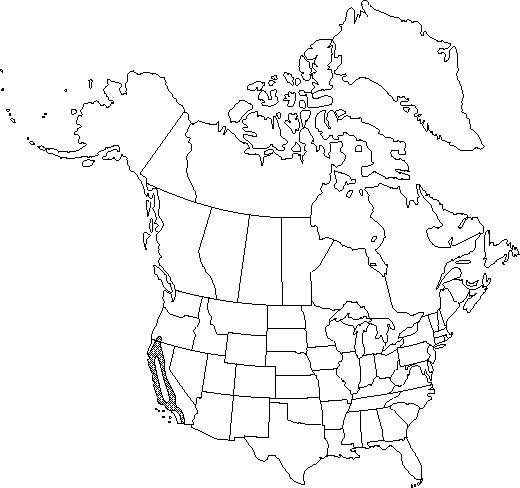Difference between revisions of "Eschscholzia caespitosa"
Trans. Hort. Soc. London, ser. 2, 1: 408. 1835.
Treatment appears in FNA Volume 3.
FNA>Volume Importer |
imported>Volume Importer |
||
| Line 46: | Line 46: | ||
|publication year=1835 | |publication year=1835 | ||
|special status= | |special status= | ||
| − | |source xml=https:// | + | |source xml=https://bibilujan@bitbucket.org/aafc-mbb/fna-data-curation.git/src/bb6b7e3a7de7d3b7888a1ad48c7fd8f5c722d8d6/coarse_grained_fna_xml/V3/V3_745.xml |
|genus=Eschscholzia | |genus=Eschscholzia | ||
|species=Eschscholzia caespitosa | |species=Eschscholzia caespitosa | ||
Revision as of 23:04, 27 May 2020
Plants annual, caulescent, erect, tufted, 5-30 cm, glabrous, sometimes slightly glaucous. Leaves basal and cauline; blade with ultimate lobes short (giving compact appearance), obtuse or acute. Inflorescences cymose or 1-flowered; buds erect, apiculate-acuminate, tip usually more than 1/4 length of bud. Flowers: receptacle obconic, less than 2.5 mm broad, cup without spreading free rim; calyx apiculate, glabrous; petals yellow, sometimes with orange spot at base, 10-25 mm. Capsules 4-8 cm. Seeds brown to black, ellipsoid to obovoid, 1.5-2.4 mm, reticulate. 2n = 12.
Phenology: Flowering spring (Mar–May).
Habitat: Open chaparral
Elevation: 0-1500 m
Distribution

Calif., Oreg., Mexico (Baja California).
Discussion
Eschscholzia caespitosa grows in the mainland foothills.
Selected References
None.
Lower Taxa
None.